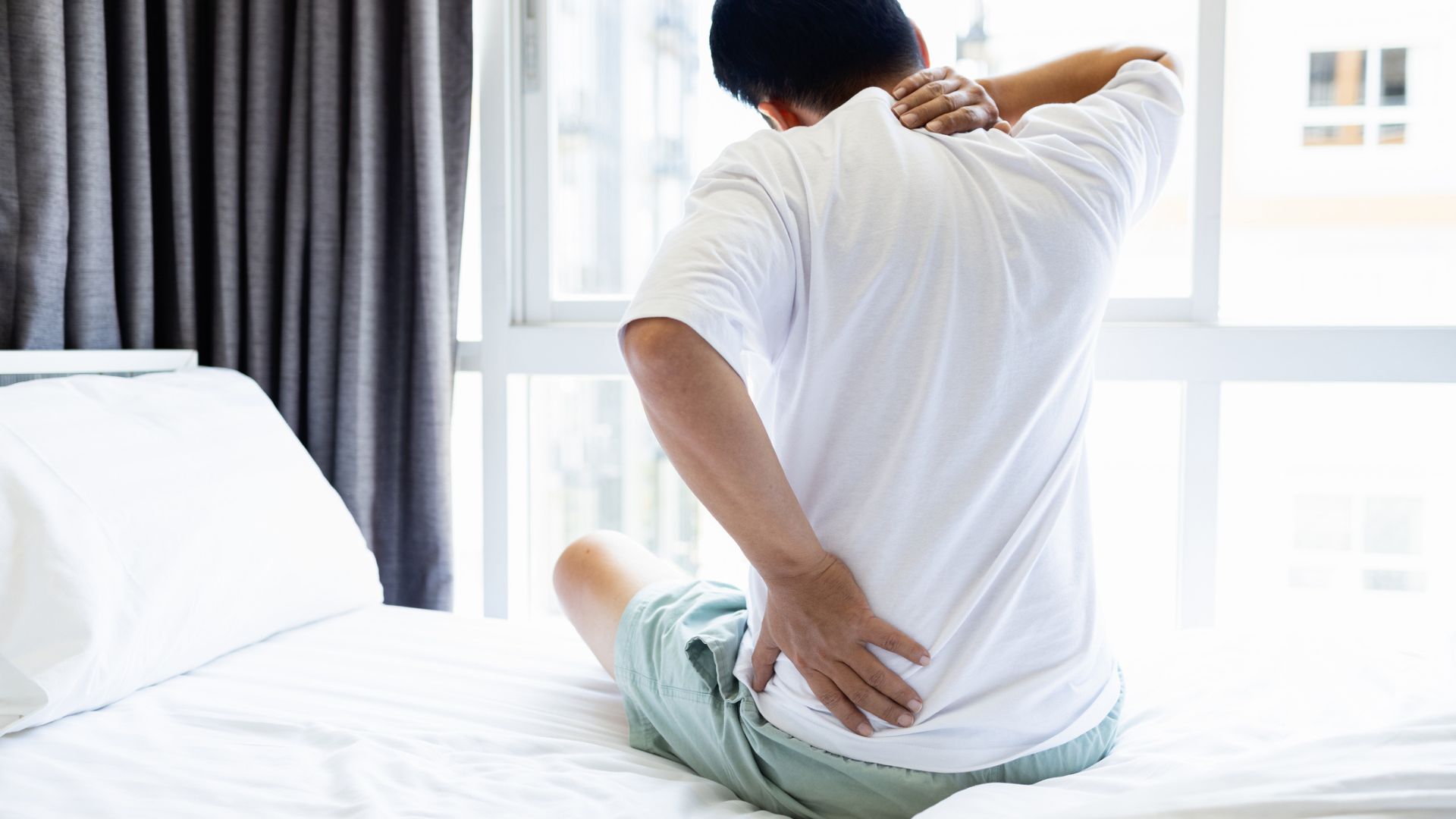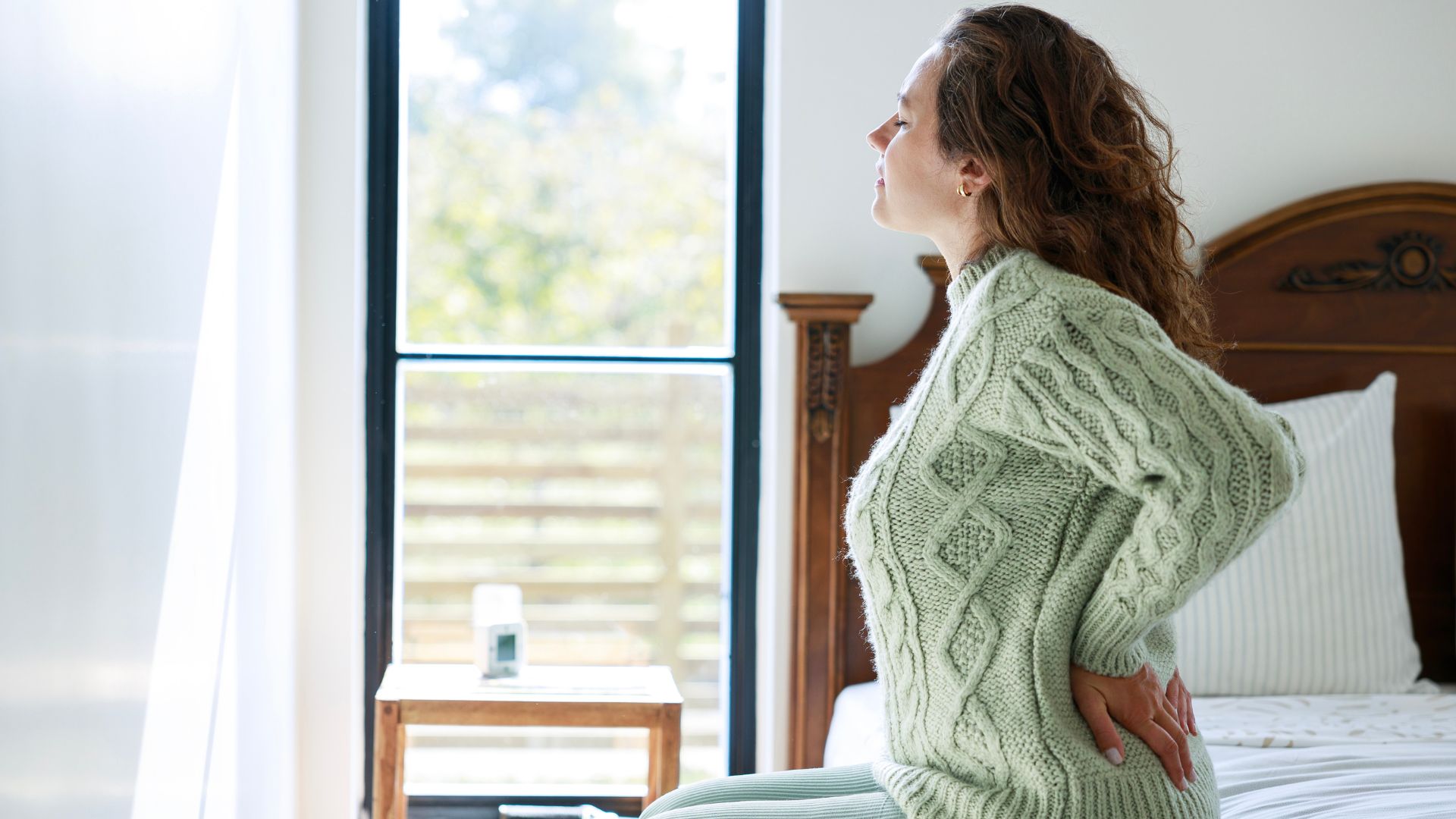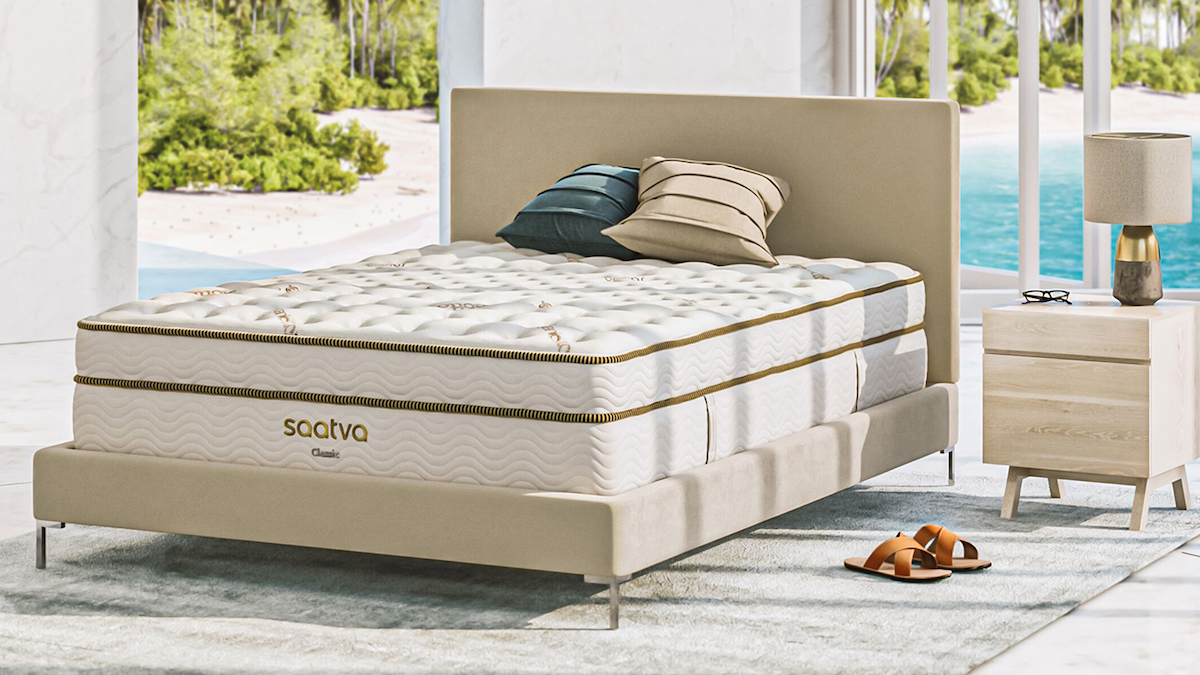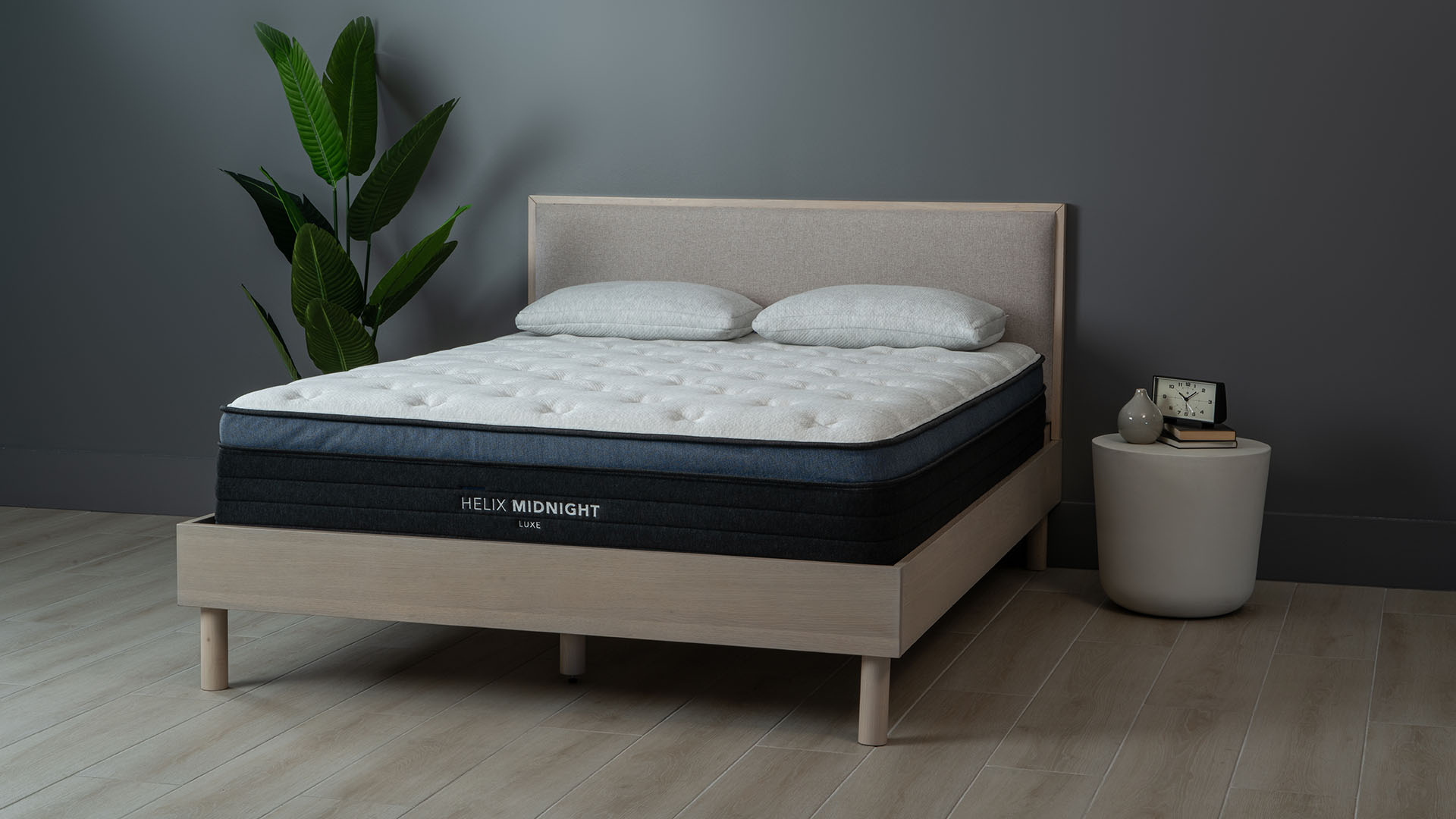Yes, you need to switch up your mattress and pillows as you get older — here’s why
Here’s why you need to update your bed as you get older

Our sleep style, body type and comfort preferences mean we tend to know what type of mattress and pillows will meet our sleep needs. However, these preferences and needs change as we get older.
Even the best mattresses have a lifespan, but it’s not just a mattress wearing out that means we might need to replace it. As we age, sleep patterns can change and certain health conditions can emerge or worsen, such as restless leg syndrome, arthritis and back pain. In addition, how much sleep we actually need changes as we age, meaning we might be spending more or less time in bed. All of this can add up to our current mattress and pillow combination not being suitable for the particular life stage we’re at.
Replacing a mattress can be costly, but timing your purchase to coincide with a mattress sale will mean you're unlikely to have to pay full MSRP. Of course, timing your purchase to coincide with major holidays, like the Memorial Day mattress sales in May, will mean getting the biggest discounts available. But is it time for you to switch up your mattress and pillows? Let's find out.
Why you need to switch up your mattress and pillows as you get older

Although everyone has individual sleep needs and preferences, there are some factors that affect everyone as we age. One of the biggest ones is that our melatonin levels decrease, which can make it harder to fall asleep and stay asleep all night. In addition, advancing age can make health conditions, such as restless leg syndrome, arthritis and back pain emerge or worsen, with aches and pains preventing us from sleeping soundly.
Why does this mean that our mattress and pillow require switching up? As we age, correct spinal alignment becomes more crucial and making sure our spines are correctly supported can be the difference between suffering with back pain or not.
And if you’re sleeping on the wrong type of mattress, you might not be getting the support you need (same goes for the pillow). A firmer mattress tends to be best for us as we age but care still needs to be taken to ensure adequate pressure relief and even weight distribution to avoid any painful pressure build up.
How to choose the best mattress as we get older
Choose a hybrid, not a memory foam mattress
Memory foam isn’t necessarily going to be supportive enough once we’re older, with too much sinkage to support pressure points. Picking one of the best hybrid mattresses will give you combined support from foams and coils, with the coils helping to keep the spine aligned. Some memory foam at the top of the mattress will provide cushioning, although combination sleepers may want to look for mattresses with latex to make it easy to move around.
Sign up to get the BEST of Tom's Guide direct to your inbox.
Get instant access to breaking news, the hottest reviews, great deals and helpful tips.
Look for the best firm mattress
As we age, one of the best firm mattresses may offer more of the support we need to help prevent aches and pains. However, this isn’t to say that you should go for anything too rigid, as our bodies still need cushioning and pressure relief as we age. We would recommend looking for a mattress with a firmness rating of 7-8/10, as this gives more firmness while still providing some gentle sinkage for cushioning.
Make mattress height a consideration

One of the big problems with many modern mattresses is that they’re incredibly high. Not only does this mean you’ll need to purchase deep fitted sheets, but a mattress that is too high could be tricky to get in and out of as you get older. This can be particularly true if you have mobility issues or conditions that cause problems with your legs (such as arthritis).
Choose a mattress with a height that’s easy for you to get in and out of bed with (don’t forget to take your own height into consideration). Many of the best mattresses come with customizable height options. For example, the Saatva Classic mattress is available in both a 11.5" and 14.5" height.
Sturdy edge support is crucial
Similarly to the height of a mattress, good edge support makes it easier to get in and out of bed. But you also need sturdy edge support to make sitting on the edge of the bed to get dressed etc. and physically get out of bed safer. Poor edge support makes it harder as we get older to get up and out of bed. In addition, it also reduces our usable sleeping area on a mattress, meaning you could find yourself uncomfortably trying not to roll out of bed.
Keep back pain at bay with lumbar support
We would recommend looking for a mattress with targeted lumbar support as you age, particularly if you don’t want to go for a firmer mattress as we suggested above. Mattresses such as the Saatva Classic offer this targeted support, making it our top pick in our best mattresses for back pain round up. Target lumbar support or zoned mattresses will help to keep aches and pains at bay, providing targeted support to keep the spine aligned.
Soothe achy joints with pressure relief

Although a firmer mattress is a good idea as we age, care still needs to be taken to provide pressure relief at the key pressure points (neck, shoulders, back and hips). A pillow top firm mattress can be a great solution, providing a layer of cushioning comfort and a little sinkage at the top of the mattress, with plenty of firm support from firmer foams and coils underneath. Our best pillow top mattresses round up will help you pick the most suitable for your sleeping needs.
Opt for a cooling mattress
Women in particular need to think about hormonal changes as they age. A common side effect of the menopause is hot flushes, so the last thing they will want is a mattress that traps heat and makes them overheat even further. The best cooling mattresses offer features to help sleepers keep cool at night and regulate temperatures for a comfortable sleep. Of course, if you struggle to stay warm at night, you could consider an electric blanket.
How to choose the best pillow as we get older
When we’re young it’s easier to get away with sleeping on any old pillow but again, as you age, you need to choose your pillow with more consideration. The first thing to consider is your sleeping position. The best pillow for you will cradle your head, neck and spine in neutral alignment and will help to prevent neck pain.
Back sleepers should look for a medium loft (height) and medium firmness pillow that will conform to pressure, whereas side sleepers need a high loft and firm support to keep heads raised and in alignment. Stomach sleepers on the other hand need low loft and soft support so that the pillow doesn’t throw their neck out of alignment with the rest of the body.
Sleep preferences should also play a part. If you sleep hot, a cooling pillow can be vital as we lose heat through our heads and you don’t want a pillow to trap it. Likewise, consider if you have any allergies. A hypoallergenic pillow will help prevent you suffering, whilst also helping to cut down on dust mites.

Jo Plumridge is an experienced mattress reviewer with several years' experience covering all things mattresses and sleep, and who tests memory foam, hybrid and organic mattresses. What Jo doesn't know about a boxed mattress isn't worth knowing, so naturally we tasked her with producing a series of features for Tom's Guide looking at all aspects of mattresses, from how to pick between latex and memory foam (it's a tricky one), to the seven mistakes people make when buying a mattress for the first time. When testing the DreamCloud Luxury Hybrid for Tom's Guide, Jo said: "I loved the back support and pressure relief it offered. Plus, it looks far more expensive than it is." When she isn’t writing about sleep, Jo also writes extensively on interior design, home products and photography.
